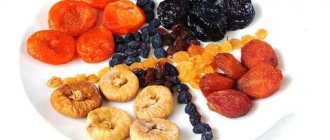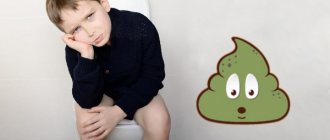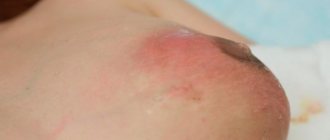Flatulence is bloating of a child’s abdomen due to excessive accumulation of gases in the intestinal lumen and difficulty in their passage. This phenomenon often develops in almost all infants.
Intestinal bloating with gases can provoke the appearance of intestinal colic: severe pain in the child’s abdomen due to spasm of some parts of the intestine and excessive stretching of others against the background of flatulence. The pain is cramping in nature and goes away as the gases pass.
Flatulence and intestinal colic are often the first problem for a young mother: these phenomena can appear as early as two weeks of age.
Additional symptoms
Bloating often appears in infants, and after six months of age the problem goes away.
This is caused by a weak gastrointestinal tract, which can react to any changes. The worst thing is that children cannot say anything about where it hurts or what is bothering them. But bloating in children can be recognized by characteristic behavior and symptoms.
The first symptom of bloating in a baby is restlessness after a meal. The baby cannot sleep, hugs his legs to himself, and constantly cries.
If parents touch the tummy, they can feel its elasticity and hardness. In addition, visually it becomes rounded.
Gas formation and bloating in young children are often accompanied by other signs:
- The abdomen becomes hard and slightly enlarged.
- Children are capricious, cry, and cannot lie still.
- Due to the accumulation of gases, pain appears.
- Hiccups develop after eating, which is often accompanied by regurgitation.
- Sweating increases, even when the room temperature is normal.
- Children constantly jerk their legs, pulling them towards their stomach.
Having determined that the baby has started to bloat, parents should determine the cause of the malaise.
Only after this can you move on to measures to remove discomfort.
What is flatulence? Symptoms. Recognition
A concomitant cause of difficulty passing stool is flatulence. Flatulence is bloating of the abdomen, which is characterized by the accumulation of gases in the intestines and their difficulty in passing.
Flatulence is not uncommon in young children - this is due to the formation of the baby’s own intestinal microflora. When examining the baby, the abdomen is noticeably enlarged in size, more round, and also hard to the touch. The child is restless, cries, screams and presses his legs to his tummy.
You can mainly get rid of the phenomena of flatulence by doing the following manipulations for your baby:
- We change the position of the baby’s body from left to right a couple of times. While lying on your back, lightly massage your baby's stomach in a clockwise circular motion. The palm must be warm, so before stroking the baby’s tummy, the palm must be warmed from the diaper that has just been ironed. Some mothers preheat their hands in hot water, but then it is difficult to massage with wet hands; after all, the hands must be dry.
- Another effective way is to bend the baby’s legs. We lay the child on his back, take his shins with our hands and bend his legs, lightly pressing the child’s knees to his tummy. To begin with, bend the legs alternately, then both together. We remember that the navel has not completely healed. This exercise can be combined with stroking.
Having done some kind of gymnastics for the baby, the gases will go away, and the tummy will become softer and decrease in volume. The child will calm down.
Main reasons
There are several main reasons why bloating develops in children:
- Weak digestive system. In newborns, the gastrointestinal tract is formed up to 6-7 months; over the course of several months, children learn to adapt to a new diet, and gases often appear. Up to six months, the appearance of colic is a normal physiological process.
- Improper diet of the mother while breastfeeding. If the mother uses poor nutrition, for example, consumes baked goods, milk and fatty foods, then bloating in children begins to appear quite often.
- Weak nervous system. Due to her immaturity and frequent crying and other stress, children may experience bloating as a reaction of the nervous system.
- Improper feeding. While eating, the baby swallows a lot of air along with milk, so a lot of gases accumulate in the stomach and intestines.
- Allergy. Some babies may be allergic to protein from milk or other foods.
- Infection. In the presence of intestinal infections, colic and bloating often appear. In this case, there are other characteristic symptoms.
- Intolerance to certain foods. This problem is typical for those who feed with artificial formula rather than breastfeeding. In this case, to remove the symptom, you will need to change the mixture to another, from another manufacturer, carefully studying the composition.
Sometimes bloating occurs in a child due to a loose fit of the mouth to the nipple, then the baby simply swallows a lot of air.
For older children, the problem is hidden in allergies to certain foods, and bloating also appears due to baked goods or soda.
Many children love chewing gum, which also leads to bloating. If there are no obvious reasons, then parents need to pay attention to the mobility of their children.
Lack of activity or overeating also leads to the problem. Based on the cause, a treatment method is selected.
All the described factors, except for intestinal infection, can be treated with folk and other remedies. If you have an intestinal infection, you cannot do without medical help and medications.
Causes of bloating in babies
A large belly that appears as a result of the accumulation of gases does not always indicate a serious illness. Before you panic and frantically select treatments, contact your pediatrician and determine the cause of the problem.
Bloating can be caused by:
- Underdevelopment of the digestive system. At the time of birth, the baby’s intestines are not fully formed, so it is difficult for the body to digest unusual food. In the first three to four months of a newborn's life, this becomes the main cause of bloating and colitis.
- Insufficient amount of enzymes in the body, which leads to disturbances in the digestion process.
- Swallowing air. It enters the stomach along with milk if feeding techniques are violated. An incorrectly selected feeding bottle will have the same effect. Remember that the hole in the bottle should not be too big.
- Using the wrong mixture. If a baby is bottle-fed and suffers from increased flatulence, the first thing to change is the formula.
- Mom's non-compliance with the diet. While breastfeeding, foods such as legumes or radishes should not be consumed. They enter the child's body through milk and lead to disturbances in the functioning of the digestive system.
- Infection with E. coli. In rare cases, gas formation may increase due to such an infection.
Attention! You should not experiment with treatment. Indeed, if the selection of medications is unsuccessful, you risk aggravating the situation.
Treatment
Doctors and scientists use several methods to improve the condition of newborns and older children.
Non-drug methods
The very first thing you can do for colic is massage the abdomen. It is necessary to carry out stroking movements clockwise for 5 minutes.
The movements are light, with little pressure. In addition, you need to use the following methods:
- Change your diet. If we are talking about children over 1 year old, then legumes, cabbage, milk and baked goods should be excluded from the menu. Such food provokes the accumulation of gases. For a baby or infant, you will need to follow the proper nutrition of the mother herself.
- If a problem occurs, it is helpful to hold babies upright after feeding. You can wear them on your hands for about 10-15 minutes.
- Use heat for treatment. You should warm up the towel and place it on your stomach when colic occurs. Heat has a good effect on the gastrointestinal tract and can eliminate spasms and pain. After a few minutes the discomfort goes away. Keep the towel on for up to 10 minutes.
- Before eating, place children on their stomachs for 5 minutes. This improves the functioning of the digestive system. Due to this, the body prepares for the arrival of food, eliminating bloating after it.
In some cases, experts advise buying a gas outlet tube at a pharmacy and using it when bloated. It can be made of rubber or plastic and is inserted into the anus, due to which gases begin to escape.
Before the procedure, the anus should be lubricated with cream or Vaseline, and the tube should be lubricated in the same way.
For children under six months of age, the procedure is performed in a supine position. For babies for more than six months, it is necessary to carry out the exercise on their side, with their knees pressed to their stomach.
There is no pain when inserting the tube, everything is done carefully, the tube is inserted no more than 2 cm.
You need to use the tube for up to 10 minutes, just this time is enough to relieve the intestines of gases.
The legs should be pressed to the stomach at all times. At the end, the babies are washed and the tube is boiled to disinfect.
Drug treatment
Only certain types of colic medications can be given to children. Among the safest ones is Sub Simplex.
This is a solution that is diluted in water and given to the baby after feeding. For treatment, use 15 drops per 200 ml of clean water. For a single dose, it is enough to give 50-70 ml. You should take the product 2-3 times a day, depending on the shape and frequency of bloating.
Doctors also recommend using Bobotik. The medicine is sold in the form of drops. Before use, add 8 drops to the water and give the baby the medicine to drink. Take after meals 2-3 times a day.
Plantex is no less effective and safe. The drug is sold in powder form and can quickly relieve bloating.
For treatment, you need to combine ½ packet with 100 ml of warm water. The prepared product is drunk 1-2 times a day.
Traditional methods of treatment
Folk remedies are in demand among many parents. They are harmless and time-tested.
In addition, simple recipes give positive and quick results. The following remedies can be used for treatment:
- Dill water is one of the most effective recipes for colic and other gastrointestinal disorders. To create it you need 1 tbsp. crushed dill seeds add 0.5 liters of boiling water. Leave the drink for 3 hours, then strain it. Give babies 1 tsp. 4 times a day in between feedings.
- Parsley decoction helps to quickly recover. For cooking, the root is used, it must be chopped and 1 tsp. add 250 ml of water at room temperature. Leave the product for 20 minutes, then put it on low heat and warm it up, without bringing it to a boil. After removing the drink from the heat, filter it and give the baby 1 tsp. 3 times a day.
- Dandelion infusion - brings faster results with bloating. To create it, you need to use the root, it is crushed into 2 tbsp. add 250 ml of boiling water. After a day, the drink is filtered and given to children 30 ml up to 2 times a day.
Using the remedies described, you can easily help your child with bloating and colic. To eliminate the possibility of unpleasant symptoms, it is important to adhere to some preventive measures.
First aid and therapy
When a child experiences flatulence, parents should provide him with first aid, which consists of the following actions:
- performing an abdominal massage, which requires making circular movements with your hands in a clockwise direction;
- inclusion in the diet of dill water or a special preparation “Plantex”, created on the basis of fennel for the treatment of flatulence;
- the use of a glycerin suppository, which has a laxative effect, or a special tube for removing gases;
If Plantex turns out to be ineffective, first aid continues to be provided with the help of other drugs - Bebinos, Bobotik, Infakol or Espumisan. All of them are symptomatic remedies for bloating, preventing increased gas formation, but not curing flatulence itself. Older children are prescribed a cleansing enema to get rid of constipation and the disease itself. You can use the drug "Smecta" - however, due to side effects such as constipation and nausea, they try not to give it to children.
Parents of young patients should know that flatulence should be treated only with the drugs prescribed by a specialist. It is not recommended to choose medications on your own due to the risk of even greater gas formation in children. Especially if the cause is related to problems such as dysbiosis, helminthiasis, colitis, pancreatitis and congenital intestinal pathologies.
Treatment is prescribed depending on a number of factors - the patient’s age, the causes of flatulence and its severity. Basically, the problem is solved by prescribing anti-inflammatory therapy or antibiotic therapy. And to restore the intestinal microflora, symptomatic therapy is used, which involves taking antispasmodics and laxatives, which reduce gas production in the body.
Prevention
Prevention measures are very simple, but they help to avoid problems and torment for the child.
Among the main ones:
- When breastfeeding, the mother must adhere to proper nutrition and exclude foods that lead to the accumulation of gases.
- You need to constantly walk with your child and spend more time in the fresh air. Thanks to oxygen, a child's body can function properly.
- Children over 1 year old should not be given soda, baked goods, or foods that are harmful to their young digestive system.
- There is no need to overfeed children. From excess food, various disorders develop, problems appear that are more serious than bloating.
- It is important to constantly do gymnastics with your child, which improves gastrointestinal motility. Teach kids an active lifestyle from childhood.
- Monitor the feeding of infants so that they do not swallow a lot of air. To do this, you need to ensure a tight fit of the lips to the breast or nipple on the bottle.
- After feeding, it is useful to carry children upright and give them abdominal massage.
To prevent bloating, you can use water treatments. It is recommended to take baths 3 or more times a week.
For prevention, a decoction of chamomile or string is added to the water. The duration of therapy is about 20-30 minutes.
If swelling appears, immediate action must be taken. There are quite a few reasons, but almost all of them are not dangerous and can be easily treated.
How to help a newborn
If bloating is not a consequence of some pathology, you can use several techniques to alleviate the child’s condition at the time of an attack:
- A light abdominal massage helps a lot. To carry it out, you need to stroke your tummy with a fully open palm in a clockwise direction. Under the influence of mechanical movements, gases begin to descend lower and eventually leave the body.
- The massage can be alternated with flexion and extension of the baby’s legs. To do this, you need to lift your legs and slowly press them towards your baby's chest. And then just as slowly unbend them.
- Warmth will help relieve spasms. Apply a warm heating pad or a diaper heated with an iron to the baby's tummy for 5-10 minutes. Attention! Make sure that the heating pad and cloth are not too hot.
- Change the baby's position. To do this, first lay it on one side, then turn it over to the other. You need to repeat this procedure two or three times. After such revolutions, the gases should move independently in the intestines and painlessly exit the body.
If gas formation causes severe pain and cramps in the abdomen and you cannot relieve these symptoms on your own, you can use special antispasmodics and carminatives.
Causes and treatment of flatulence in children
This problem can manifest itself as increased formation of gases inside the intestines. At this time, bloating, rumbling inside the abdomen, colic and gas release are observed.
The formation of such disorders is interconnected with the anatomical and functional structure of the baby’s body.
In particular, this applies to infants, whose bloating is caused by difficulties in adapting to new living conditions.
Over time, the causes of flatulence in children will change and become similar to the factors of increased gas formation in adults.
Causes
Every 4 children are susceptible to colic. They often affect boys. Typically, such phenomena occur in a baby in the evening.
Flatulence in children and intestinal colic disappear by 4-5 months of life, and only in exceptional situations are they observed in children after 6 months.
The causes of flatulence are varied:
- Underdevelopment of the digestive organs and lack of enzymes for food processing. It is the main cause of flatulence in children. The result is fermentation of food with excessive gas formation.
- Swallowing air during feeding or crying.
- Feeding the wrong formula.
- Inappropriate dilution of the mixture.
- Overeating baby.
- Lactase deficiency. There is no special enzyme for processing lactose (the main component of breast milk and many infant formulas).
- Sensitivity to cow's milk proteins.
- Dysbacteriosis. The balance of beneficial bacteria in the intestines is disrupted.
- Viral diseases (intestinal infections).
- Abnormal structure and localization of the large intestine, which leads to disruptions in the movement of food and the intensity of fermentation.
- Disturbances in the diet of a nursing mother. Taking spicy, cow's milk, products that promote increased gas formation.
- Often, flatulence and colic in the intestines are observed in weak, premature children with malnutrition and rickets. The provoking factor will be the inconsistency of the baby’s nutrition with age indicators, premature transfer to artificial feeding.
In a situation of severe flatulence in children, it is necessary to find out the recommendations of a specialist in order to prevent the appearance of possible pathologies, also manifested by bloating, anxiety, upset stool and crying.
In older children, the causes of the phenomenon will be diseases of the digestive system (chronic gastritis, pancreatitis, colitis). Also, the formation of flatulence is affected by excessive fat, protein or carbohydrates, and overeating.
The occurrence of such symptoms can be caused by the baby’s psycho-emotional anxiety or stressful situations.
They can provoke an increase in tone and intestinal spasm, which leads to slow movement of food through the gastrointestinal tract and further fermentation with the release of gas.
Reviews
Dear readers, your opinion is very important to us - therefore, we will be glad to receive feedback about flatulence in children in the comments, this will also be useful to other users of the site.
Ulyana, Orenburg
“My newborn daughter suffered greatly from the accumulated gases: she cried day and night, and out of ignorance and fear of harm, I did not dare to do anything. I called a nurse I knew several times, she put a gas tube in my baby, after which my daughter immediately calmed down and fell asleep instantly. One day she started crying again and pressing her legs to her tummy, complaining about the gas. I tried it - my tummy is tight, like a drum! To help her poor baby at least a little, she began to slowly stroke her, first with one hand, then with the other, warming her palms on the radiator. Soon I felt that the gases began to leave little by little. The tummy became softer and softer, and the daughter became calmer. So, quite by accident, I found a way to cope with flatulence. Then, until she was three years old, my daughter asked me to warm her tummy when she fell asleep.”
Ruzanna, Nalchik
“On the advice of my grandmother, I gave all three of my children dill water from the first months of life - literally one teaspoon at a time. No one had a single attack of flatulence!”
Symptoms
The symptoms of flatulence depend on age. The older the baby, the fewer different signs the phenomenon presents and the more painful it is.
The most popular symptoms of flatulence:
- Heaviness in the abdomen, feeling of fullness.
- Visual increase in the size of the abdomen.
- The stomach will become hard.
- Stitching pain, spasms.
- Internal pressure, feeling of fullness.
- Prolonged absence of gases.
- Hiccups, in some cases unpleasant belching is noted.
- Loss of appetite.
- Grumbling in the stomach.
- In some cases, nausea occurs.
- Deterioration in health.
In children, in addition to the above, a fairly common symptom is increased sweating. When the gases have passed, all signs also disappear.
Diagnostics
The simplest and most accessible way of examination is to monitor the diet of the baby and mother during lactation.
When flatulence occurs after consuming a specific product, it must be removed from the menu.
In addition, you should adjust your eating schedule. Eating at the same time every day will help normalize the functioning of the intestines and restore proper microflora.
When such a method is not effective and they fail to eliminate the phenomenon, you should ask for help from qualified specialists.
The following clinical studies are known to determine the presence of flatulence:
- Fecal analysis. Thanks to it, it is possible to determine helminthiasis and dysbacteriosis. In addition, diagnosing stool and identifying residues of unprocessed food products in it can be a signal of disruptions in the functioning of the intestines.
- General blood analysis. The content of leukocytes indicates the presence of infection or inflammation inside the body.
- Probing. It is used only in situations where there is suspicion of intestinal obstruction.
- Special tests. Using this method, the quantitative and qualitative composition of enzymes that are necessary for digestive processes is determined.
Treatment after diagnosis is prescribed by a gastroenterologist. When it comes to infants, the basic principles of therapy are determined by the doctor.
Conservative treatment
To eliminate flatulence in children, it is necessary to identify the immediate root cause of the disorder.
This therapy, which is aimed at the provoking factor of the disease, may consist of normalizing the nutrition of the baby and mother, normalizing the intestinal microflora, and treating other gastrointestinal diseases.
You should not carry out the treatment yourself. In any situation, it is necessary to consult a doctor, a specialist will determine the provoking factor of the phenomenon, and also prescribe appropriate therapy.
It is possible to eliminate colic in several stages:
- Review of diet. An inappropriate diet for a baby can cause flatulence. Initially, you need to exclude products that contribute to increased gas formation. Meals should be regular, multiple, in small portions. The digestive system gets used to the regime, enzymes quickly break down food, and excess is promptly removed.
- Elimination of diseases that cause colic in children. Treatment should be prescribed only after a properly conducted examination of the phenomenon. This category includes intestinal infections, gastrointestinal diseases, intestinal obstruction, and dysbacteriosis.
- Restoring gastrointestinal motility, normalizing the digestive process through special anti-flatulence medications (Motilium, Cerucal).
- Restoration of the natural intestinal microflora with probiotics, prebiotics that promote the growth of beneficial microorganisms (Linex, Lactrofiltrum).
- The use of enterosorbents, which are aimed at breaking down gases and removing accumulated toxic substances from the body (Smecta, Activated Carbon, Polysorb).
As additional treatment, children may be prescribed active rest, hardening, and strengthening the body.
For an infant under 2 years of age, drug therapy can be prescribed only after the recommendations of a specialist. Various nonspecific drugs can also eliminate colic in a baby.
Forecast
As for the prognosis of flatulence in children, we can talk about anything only after establishing the exact cause of the increased formation of gases. As a rule, this problem can be easily solved with the help of official and traditional medicine. In some cases, there is a need to adjust the diet and stabilize the balance of intestinal microflora.
Neuroses and other pathological conditions of the nervous system, which result in flatulence, are dealt with by a pediatric neurologist.
If lactase deficiency is detected in a child, foods containing lactose must be removed from the diet, after which the gastrointestinal tract begins to function normally.
Sometimes doctors are faced with difficult cases, such as intestinal obstruction. In this case, surgery may be required. Depending on how quickly the child’s parents contacted a medical institution and how qualified the assistance provided to the child was, an appropriate prognosis can be made.
Do not forget that in young children the phenomenon of flatulence is a natural process, especially in infants. But if you have even the slightest doubt, if you intuitively feel that something is wrong with your child, be sure to contact a qualified pediatrician.
ethnoscience
Children are recommended home remedies that are based on medicinal plants that help eliminate this phenomenon without harming their health.
It is possible to cure flatulence using the following means:
- Pour 1 tbsp boiling water into a glass. l. dry chamomile, infused for 5-7 hours. The finished mass is cooled, filtered, and given to the child 1 tsp. after 3–4 hours.
- Mixed in equal amounts are marshweed, St. John's wort, and yarrow. The finished mass is poured with boiling water 1 to 10 and left for 4 hours. Children over 5 years old are allowed to drink 3-4 cups per day.
- Tincture of caraway seeds. 1 tbsp. l. raw materials are poured with 250 g of hot water and infused for half an hour. The prepared medicine is given to the child 1 tbsp. l. before eating. The course of therapy lasts no more than 10 days.
- Parsley tincture. For 100 g of water take 1 tbsp. l. finely chopped parsley, simmer over low heat for 10 minutes. The prepared drug is filtered, cooled, and given to the child 1 tsp. before meals. Eating fresh parsley will be beneficial; it prevents the formation of flatulence in children.
- Herbal collection from seeds of dill, rowan, chamomile, valerian root. All ingredients are mixed, 1 tbsp. l. The mixture is poured with boiling water and left for 2 hours. It is optimal to make medicine in a thermos. When it cools down, give the child 1/3 glass before meals. Each time a new remedy is prepared; storing the medicine in the refrigerator is not recommended.
- Warm mint tea is an excellent remedy for flatulence. A few peppermint leaves are added to regular tea. A baby up to 12 months is given 1 tsp. 3 times a day, children under 5 years old - 1/4 cup 2 times a day, older children can drink tea without restrictions.
Treatment locally or with medications
Still, if none of the above methods help alleviate the baby’s condition, the tummy remains hard and swollen, and the baby cries and is restless, then you need to use a rectal gas tube.
A special gas outlet tube is a rubber tube, the end of which is thin and rounded with an insertion limiter.
Before insertion into the anus, the tube must be washed with soap and boiled. Then, after removing the remaining water from it, lubricate the rounded tip with petroleum jelly or petroleum jelly, if you don’t have one in the house, you can lubricate it with simple vegetable oil.
You need to introduce it slowly and carefully, without effort, so as not to cause pain to the baby, then scroll clockwise. If suddenly the gas outlet tube stops moving, you need to pull it back out a little, carefully turn it and try to continue insertion.
When the tube reaches the place of formation of gases, they rush out through its upper hole, and the child immediately feels better. You can use a gas tube if the child has not had a bowel movement for three or more days. The tube will serve as an irritant to the anus and the baby will immediately poop.
You can use the tube no more than two or three times a day, and only in extreme cases. If the mother is unable to carry out this manipulation, she can ask the pediatrician to do it.
And in a more complex case, decide on the use of medications. An effective and gentle drug in drops is Espumisan for newborns. In parallel with Espumisan, Lacidocap should be used to prevent dysbacteriosis.
Prevention
In order to eliminate the occurrence of increased formation of gases in a child, it is recommended to follow certain instructions:
- if necessary, you need to exclude the consumption of legumes, highly carbonated water, cabbage, sweets, and flour;
- It is important for a child to understand the need to chew food thoroughly;
- leisurely meals;
- create an optimal diet and follow it (this will make it possible to improve the digestive process and eliminate overeating);
- in order to properly process food, you should lead an active lifestyle and do physical exercise;
- To prevent flatulence, it is possible to give a baby dill water, fennel tea or chamomile tea (after finding out the recommendations of a specialist);
- For older children, mint tea is useful for prevention.
When flatulence does appear, the usual therapy, which is described above, will help the child at any age.
Flatulence in a child is often a short-term phenomenon that goes away on its own as the digestive system matures by 6 months.
To exclude more serious provoking factors of its appearance (lactase deficiency, dysbacteriosis, developmental abnormalities, etc.), you may need the help of a doctor.
Preventive measures
To prevent the development of flatulence in a child, you must adhere to the following recommendations:
- Balance your diet. The baby's diet should consist of foods and dishes that are suitable for his age.
- Feed the baby in small portions. Overeating is unacceptable, especially in the evening.
- Try to protect your baby from stress.
- The child must move a lot. Children especially benefit from active outdoor games at any time of the year.
- If you have health problems, consult a doctor in a timely manner and do not neglect the prescribed treatment.
To prevent colic in babies, mothers need to regulate lactation. A woman is recommended to follow a diet that excludes the consumption of large amounts of sugar, fatty and fried foods, and fast food. Feeding the baby should take place in a calm environment. If parents are forced to give their baby formula, it is necessary to take a responsible approach to its choice.
Regularly placing the baby on his tummy before each feeding and performing a preventive massage will help reduce the likelihood of colic.
Useful video
Take care of your health - save the VKontakte link
Bloating (intestinal colic) is an extremely common condition observed in all children.
Often, bloating in a child is considered the initial significant difficulty that parents may encounter.
Various provoking factors can provoke such a condition in the abdomen, but they all have their own specific characteristics in each age group of children.
Causes and treatment of bloating in children
Bloating in a child is the accumulation of a significant amount of gas inside the intestines. This condition is not considered rare for newborns and preschool children.
The causes of such symptoms in children are various natural factors and pathologies.
They differ according to age. But in many situations its appearance is due to an unbalanced diet.
Bloating can cause discomfort in the baby, which is why it is associated with other clinical symptoms.
The main signs accompanying this phenomenon are insomnia, loss of appetite, crying and anxiety.
In certain situations, in order to establish the root cause of such unpleasant symptoms, a set of clinical diagnostic measures should be carried out.
Treatment is often conservative in nature and consists of the use of medications, a review of the diet, therapeutic massage and the use of traditional medicine.
Causes
According to statistics, every 4 children are susceptible to colic. Boys are more often affected by them. Typically, such phenomena appear in children in the late afternoon.
Basically, bloating and colic in the intestines disappear in the baby at 5-6 months of age, and only in some situations are they observed in children after this period.
Provoking factors for bloating:
- underdevelopment of the organs of the digestive system and lack of enzymes for the purpose of digesting food (as a result of this, fermentation of food products occurs with excessive gas formation);
- swallowing air during feeding or crying;
- feeding with unadapted mixtures;
- improper dilution of mixtures;
- overfeeding;
- lactase deficiency - a lack of a special enzyme that digests lactose (the main component of breast milk and many other milk formulas);
- hypersensitivity to cow's milk proteins;
- dysbiosis: an imbalance of important bacteria inside the intestines;
- viral diseases;
- abnormal structure and position of the large intestine (elongation or high mobility), which provokes a failure in the movement through the intestine and the intensity of fermentation;
- error during lactation: consumption of spicy, whole cow's milk, products that contribute to high gas formation.
Often bloating and intestinal colic are observed in weak, premature children, with signs of malnutrition and rickets.
A provoking factor will be a baby’s diet that is inappropriate for his age and premature transfer to artificial feeding.
In case of severe bloating and intestinal colic in a baby, consultation with a specialist is necessary in order to avoid the appearance of all kinds of pathologies that can manifest themselves as bloating, anxiety, upset bowel movements and crying of the baby.
In older children, the root cause of bloating is often diseases of the digestive system (chronic gastritis, pancreatitis, colitis).
The causes of intense gas production include excess fat, protein or carbohydrates, and overeating.
Psycho-emotional anxiety and stressful situations can provoke the occurrence of such symptoms. They can cause increased tone and intestinal spasms.
This provokes slow movement of food through the gastrointestinal tract and further fermentation with gas release.
Causes of severe gas formation
Flatulence is especially common in infants, although it is not uncommon in other age categories. In childhood, increased gas formation occurs due to imperfect development and functioning of the gastrointestinal tract. An excessive amount of gas in the intestines puts pressure on its walls, causing an enlarged abdomen and a sharp pain syndrome - intestinal colic. They bother the baby until 3–4 months, then they often stop spontaneously.
The reasons leading to the development of bloating in a child are varied, but each age has its own characteristics.
The most common cause of flatulence in children, when treatment is not required, is not fully formed digestive and nervous systems.
In a newborn child and up to about 5 months of age, the intestine is sterile: it lacks normal intestinal microflora, which takes part in the digestion process and creates a balance together with conditionally pathogenic flora when dysbiosis occurs or pathogenic microorganisms enter the intestine. By this age, the enzyme system also improves: imperfect enzyme production in a baby also causes increased gas formation. All this leads to the process of fermentation in the intestines, the baby’s tummy becomes swollen, severe pain occurs due to spastic contractions of some parts of the intestine and stretching of others due to flatulence. These mechanisms need to be understood in order to know how to help a child with bloating.
Symptoms
Regardless of the origin of such factors, bloating provokes discomfort and severity of symptoms in children:
- a feeling of a full stomach when the child himself feels hungry;
- abdominal pain;
- the appearance of characteristic rumbling and seething;
- an increase in the size of the abdomen, which is often noticed by parents;
- belching and hiccups;
- unpleasant odor from the mouth;
- attacks of nausea ending with a gag reflex;
- belly hard to the touch;
- stool disorders, which is expressed in constipation, diarrhea, or alternation of these symptoms;
- high fatigue;
- decreased ability to work.
Such laboratory signs that accompany bloating are typical for children over 2 years of age. Infants and children under 1 year of age have the following symptoms:
- pale skin;
- refusal of breast or formula;
- severe anxiety and constant crying for no objective reason. It can be so intense that a baby under 1 year of age may often blush from excessive exertion;
- seething in the abdomen;
- unnatural position of the baby (knees bent to the stomach);
- frequent constipation;
- rare gas release;
- feces with a green tint, foamy consistency;
- insomnia;
- roundness of the abdomen.
The appearance of one or some of the above signs should be a signal for parents to seek advice from a specialist.
Diagnostics
To establish the triggering factors for bloating and gas formation in children, an integrated approach is needed. Thus, diagnostics includes the following activities:
- collecting anamnesis of the disease and the baby’s life;
- physical examination, which necessarily includes palpation of the anterior abdominal wall;
- an in-depth survey of the patient’s parents regarding the degree of manifestation of the main symptoms and the presence of related laboratory symptoms;
- clinical examination of blood, urine and feces. This is required in order to identify possible difficulties with the functioning of the digestive organs, the course of inflammation and the presence of pathological microorganisms inside the baby’s body;
- Ultrasound of the abdomen;
- X-ray;
- endoscopy.
Treatment
Treatment of bloating involves the following stages:
- Review of diet. Products that contribute to the formation of gases should be removed from the child’s menu. Portions should be small and frequent. Thus, the digestive organs can break down nutrients in a timely manner, and the excess is promptly removed. If lactase is absent, then it is necessary to exclude dairy products that contain lactose.
- Eliminating the root causes that caused bloating. Treatment is prescribed after diagnosis. Diseases that precede bloating are infections in the intestines, dysbiosis, and obstruction. This is facilitated by helminths.
- Restoration of gastrointestinal motility. This accelerates the release of gas from the intestines. Medications used: Cerucal, Motilium.
- Bringing intestinal microflora back to normal. For these purposes, the child is prescribed prebiotics and probiotics. For example, the drug “Lactrofiltrum” has a beneficial effect on the proliferation of beneficial microorganisms inside the intestines, and “Linex” contains ready-made bacteria.
- Elimination of accumulated gases from the large intestine. Espumisan is prescribed, which destroys the gas, which is then easier to remove. Enterosorbents (Activated Carbon, Smecta) will also be effective.
For a child aged 1 to 3 years, the use of medications is permitted only after the approval of a specialist. To alleviate the condition, the following manipulations will help him:
- warm the baby's belly by applying a warm heating pad;
- massage the abdomen, making circular movements with your palms in a clockwise direction;
- bend and straighten the child’s knives at the knees, pressing them to the surface of the abdomen;
- Give a child under 3 years of age a gas tube (a special catheter that is inserted into the rectum).
Herbal medicine is widely used in the treatment of bloating. It should be noted that it should be used only after consulting a specialist, as there is a high risk of allergies.
Children under six months old are recommended to drink dill water. It can be done at home.
For these purposes, you need to pour 1 tsp. dill seeds with 1 glass of water and boil over low heat for 15 minutes.
Afterwards the mass is filtered. Dill water has a beneficial effect on gastrointestinal motility, helps relax the smooth muscles of its walls and dilate blood vessels.
Children over 3 years old are allowed to use the following recipes:
- St. John's wort, yarrow and marsh grass are mixed in equal proportions. Pour boiling water in the amount of 1 liter per 3 tbsp. l. and infused for 4 hours. You need to consume 3-4 cups per day.
- Take mint leaves, anise seeds, fennel seeds, and caraway seeds in equal proportions and mix. Brew 2 tsp. mixture in a glass of boiling water and pour into a thermos for 7 hours. Drink 1 glass per day.
- 1 tbsp. l. chamomile flowers are diluted in a glass of boiling water and infused for at least 15 minutes. Used every 5 hours.
- Mix 1 tsp. dill seeds and dried thyme and pour a glass of boiling water. Infuse for approximately 10 minutes, then boil and infuse again for 15 minutes. Consume 30 g warm every hour.
In addition to the use of medications and folk remedies, one should not forget about being in the fresh air and leading an active lifestyle, since this increases the tone of the child’s body and helps to normalize all systems in the body, including digestion.
What to do if a child has flatulence?
To alleviate the condition of a baby who is suffering from intestinal colic, it is recommended to pull his legs bent at the knees towards his stomach several times, bring his arms together and spread them apart. A light massage using circular movements of the palm in a clockwise direction is very useful.
For colic, applying a diaper to the tummy, folded in several layers and pre-heated with an iron or on a radiator, helps a lot. To distract your baby, you can give him a pacifier. Water procedures provide an excellent relaxing effect - you can give your baby a warm bath or stand in the shower with him for 5 minutes.
To prevent frequent recurrent attacks, it is necessary to eliminate the cause of intense gas formation. Mother and baby may need to make adjustments to their diet.
Foods that a nursing mother should eat with caution:
- any dishes made from legumes (including canned ones);
- sauerkraut;
- grape;
- Rye bread;
- spices;
- chocolate;
- cocoa;
- coffee;
- sweet sodas.
It is also advisable to refrain from excessive consumption of uncooked fruits and vegetables.
Important
Diagnosed congenital deficiency of the lactase enzyme is an indication for feeding with special formulas that do not contain milk sugar.
Any milk mixture should be prepared strictly following the instructions. Babies should not be overfed; This does not contribute to rapid growth and development, and problems such as regurgitation and colic are almost guaranteed.
If your baby almost always spits up after eating, you need to pay attention to the breastfeeding technique. It is possible that feeding needs to be done in a different position in order to reduce the amount of air swallowed.
After each meal, it is advisable to place the baby in an upright position for a few minutes so that excess air comes out with belching. It is recommended to turn the child's back towards you and support him by the tummy.
Every young mother should have a rubber gas outlet tube in her first aid kit, but it should only be used as a last resort when more conservative measures do not help. The child needs to be laid on his side and his legs bent, bringing them slightly towards his stomach. The rounded end of the tube must be generously lubricated with petroleum jelly and, with extreme caution, inserted 1-2 cm into the rectal opening. The other end is lowered into a basin, since intestinal contents may come out along with gases. The device is left for 15-20 minutes; As a rule, this time is enough for the unpleasant symptoms to disappear. All this time, it is recommended to gently massage the baby’s tummy to speed up the process. At the end of the procedure, the baby should be washed, and then his buttocks should be lubricated with baby oil to avoid skin irritation.
note
Do not forget to rinse the tube properly and treat it with an antiseptic.
Medicines should be used with caution. It is permissible to use even the most proven and safe means only after consultation with a pediatrician. Children's doctors recommend giving children dill water to combat flatulence. To prepare it, you need to take 1 tablespoon of dry dill seeds (or a pharmacy filter bag), place it in a thermos or a regular teapot, and pour 200 ml of boiling water. After an hour, the infusion needs to be strained. The finished drug is given to children 1 teaspoon three times a day. The liquid should be kept in the refrigerator.
The pharmaceutical product Plantex, which is obtained from fennel fruits, has proven itself well . The medicine not only helps against flatulence, but also stimulates the digestion process. It has analgesic, antispasmodic and anti-inflammatory properties and improves intestinal motility. Taking Plantex helps increase appetite. The drug can be given to babies as early as the third week of life. It can be prescribed for preventive purposes when switching to artificial feeding or starting complementary feeding.
Pediatricians also recommend adding 1 scoop of Espumisan emulsion to milk formulas (3-5 r/day). The medicine is completely safe. It is not absorbed into the bloodstream and does not have a systemic effect, working only in the digestive tract.
To accelerate the removal of gases, it is allowed to use enterosorbents - regular and white activated carbon and Smecta. The disadvantage of these products is their ability to adsorb microelements and vitamins.
When dysbiosis is detected, eubiotics are recommended - preparations containing live cultures of lacto- and bifidobacteria.
In some cases, children of older age groups are advised to take digestive enzymes in the form of tablets (Festal, Enzistal, Pancreatin), but the body should not be accustomed to receiving enzymes from the outside . It is necessary to try to solve the problem by making certain adjustments to the diet. You need to exclude various sodas, chips, fresh baked goods and sweets (“fast” carbohydrates) from it. It is recommended to reduce the consumption of raw onions, cabbage, potatoes, peas and beans. It is very important to avoid overeating!
The herbal preparation Iberogast helps improve the tone of the intestinal wall, stimulate motility and relieve spasms of smooth muscles. It can be given to children over 3 years of age with various manifestations of functional dyspepsia.
Gudkov Roman, doctor, medical columnist
9, total, today
( 61 votes, average: 4.70 out of 5)
Dysphagia in children: causes and treatments
Eunit: symptoms and treatment
Related Posts
Prevention
To prevent bloating in your child, you should:
- balance your diet;
- observe how much the child eats;
- carry out lactation in a calm state;
- protect the child from stressful situations;
- arrange an active and healthy lifestyle for the child;
- Keep all medications out of the reach of children.
To effectively help eliminate this phenomenon and, therefore, colic, it is necessary to implement preventive measures long before the occurrence of bloating in the child.
Bloating in a child occurs quite infrequently, if you remember all the provoking causes.
A balanced diet and an active lifestyle are the main positive factors that help children virtually not have these problems.
The second stage of prevention and treatment
If using these simple rules it is not possible to cope with increased gas formation, you can proceed to the second stage of measures for colic:
- Give the child a drug containing simethicone (Bebinos, Espumisan, Infacol). This is a symptomatic remedy that removes gases from the intestines, but does not cure colic.
- If you have problems with bowel movements, you can give your child a glycerin suppository to relieve constipation.
- As a last resort, use a gas outlet tube.
- For severe and painful spasms, you can give your child an antispasmodic - Riabal or Viburkol. But this is only possible after being prescribed by a pediatrician.











